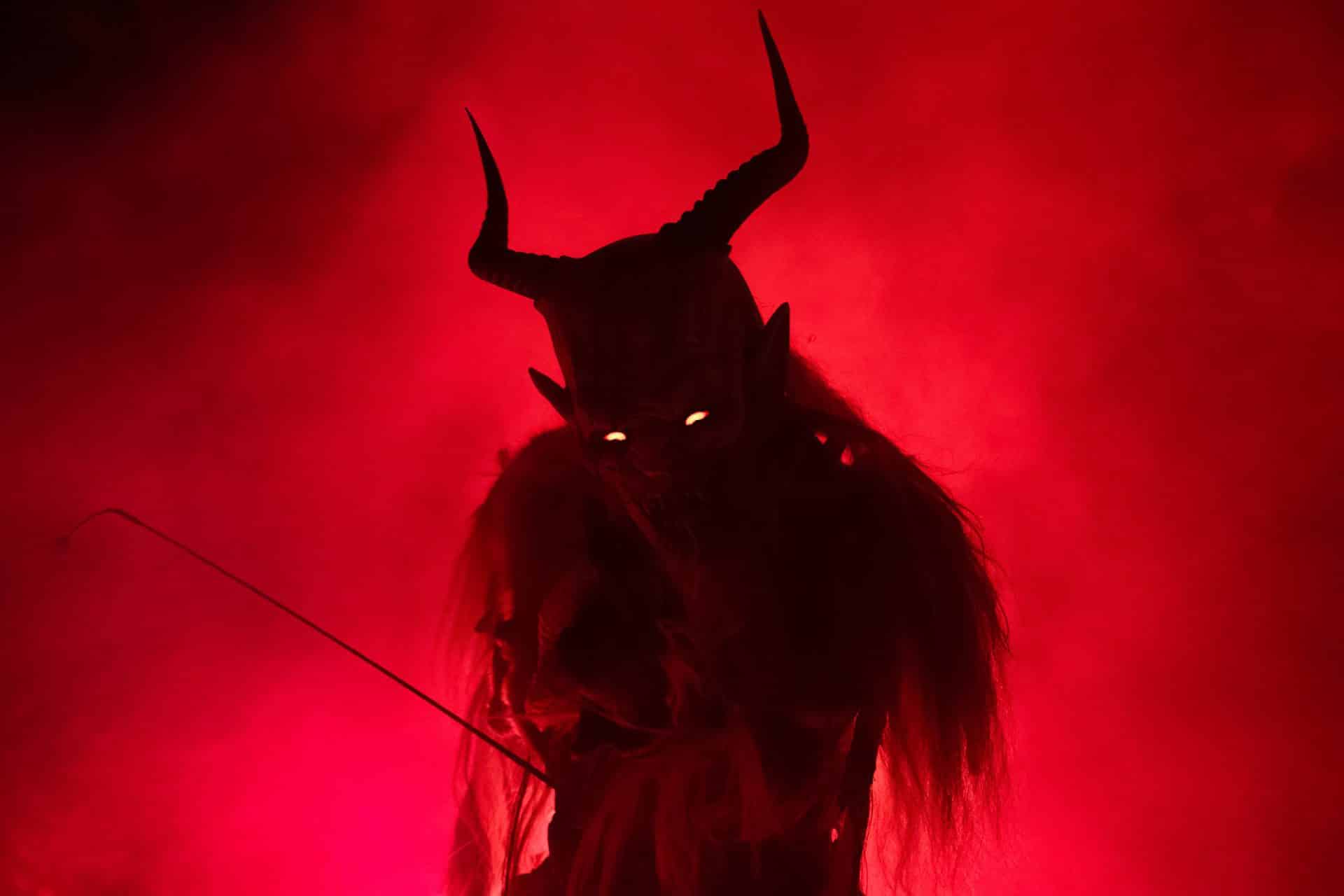Around Christmastime, many European countries are celebrating Saint Nicholas Day, usually observed on the 6th of December for the feast day of Nicholas of Myra.
Saint Nicolas had many miracles attributed to his intercession, but is also known for his generous practice of gift-giving that gave rise to the traditional model of Santa Claus (“Saint Nick”) through Sinterklaas.
Whilst Saint Nicolas rewards the well-behaved with gifts, children who misbehaved are visited by Krampus (sometimes with Saint Nicolas), a horned, anthropomorphic figure described as a “half-goat, half-demon” on Krampus Night or Krampusnacht (December 5th).
Krampus derived from the German word “krampen”, meaning claw has appeared in various depictions, most commonly as a hairy creature with cloven hooves, the horns of a goat, and a large snake-like tongue. In some depictions, he is presented carrying chains, thought to symbolise the binding of the Devil by the Christian Church.

Naughty children would find themselves beaten with birch branches or a whip, with the most sinful being snatched away in a sack or basket, with the intent to devour, drown, torture, or carry back to hell.
Folklorists have postulated that Krampus was associated with the son of Hell in North mythology, or may date to pre-Germanic paganism in remote mountain valleys of Austria as a custom to cast out winter and its evil spirits, but these beliefs most likely emerged from an origin story deliberately disseminated by folklorists in the twentieth century.
The suggested pagan association may stem from an intermingle with the Perchtenlauf that abounded during the seventeenth and eighteenth centuries. The Perchtenlauf was a procession where people dressed as a devilish two-legged humanoid goat figure known as Percht (a goddess in Alpine paganism in the Upper German and Austrian regions of the Alps).

The earliest mention of the Percht comes from the Bavarian town of Diessen in AD 1583, where those who ‘hunted the Percht’ received a monetary reward. Like Krampus, Percht would reward children with a small silver coin for good behaviour, but bad behaviour resulted in disembowelment and being stuffed with straw and pebbles.
Krampus rose in popularity during the late nineteenth century in Austria-Hungary, often featured in European greeting cards that sometimes introduced with Gruß vom Krampus “Greetings from Krampus”. This practice would become prohibited in the aftermath of the 1932 election in Austria, where the Dollfuss regime, under the Fatherland’s Front (Vaterländische Front) banned the Krampus tradition, even distributing pamphlets titled “Krampus Is an Evil Man”.
Krampus is still celebrated today in traditional parades known as the Krampuslauf (English: Krampus run), where young men dressed as Krampus parade through the streets, scaring spectators and sometimes chasing them, although the tradition has been arguably appropriated for celebration, even being popularised in the United States.
Header Image – Krampus – Image Credit : Shutterstock





